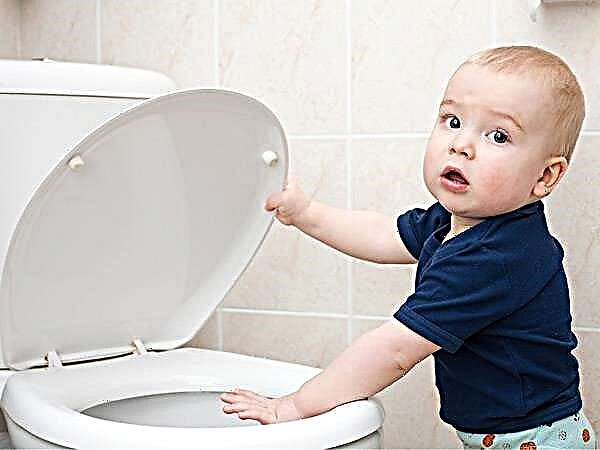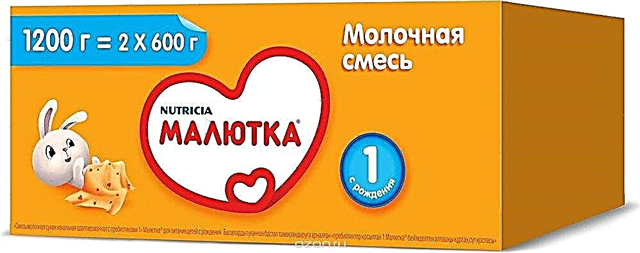A runny nose is a fairly common phenomenon in childhood. A child attending a kindergarten or school has an average of 6 - 8 times a year. When the nose is running and it is stuffy, it is uncomfortable for the child and a lot of trouble for the parents. And if the runny nose does not go away for a long time, worries are added to the hassle.

A common runny nose goes away within a week. A runny nose that lasts longer than 10 days is called lingering.
In children, a runny nose is observed more often than in adults, and often has a long-term current character. This is directly related to the peculiarities of childhood: immaturity of the immune system and narrow nasal passages, which impede the outflow of secretions.
Many mothers successfully treat a runny nose on their own, using the drugs that they were prescribed earlier. But it also happens that the treatment does not help, and the disease is delayed.
A prolonged runny nose in a child can cause serious complications (sinusitis, frontal sinusitis), so do not stay late with a visit to the doctor.
Situations when you need to see a doctor
- The duration of a cold is more than 10 days.
- It is difficult for a child to breathe through his nose both at night and during the day.
- He does not distinguish smells well or does not feel them at all.
- Instead of mucus, there is a thick, purulent discharge.
- The child complains of an itchy nose (he constantly scratches it).
- The kid gets tired all the time and looks drowsy, constantly wants to sleep.
- He has headaches.
- The child does not sleep well at night.
All these are signs of a lingering rhinitis and a reason for a visit to a doctor to determine the cause and prescribe an adequate, correctly selected treatment.
5 main causes of lingering rhinitis
- Allergy;
- A common rhinitis not treated in time;
- Frequent colds and hypothermia;
- Adenoids and deviated nasal septum;
- Bacterial infection.
In addition to these reasons, a prolonged runny nose can occur due to dry air in the nursery or in another room where the child is often located, or due to a foreign object that gets into the baby's nose and remains there.
General principles for the treatment of a lingering rhinitis in a child

To cure a lingering rhinitis, you need to find out the cause of its appearance. Depending on the cause, the treatment regimen may differ from one another. A regimen for the treatment of, say, an allergic rhinitis, will be ineffective for treating a rhinitis caused by other causes.
At home, you can hardly find out the reason on your own; an ENT doctor or pediatrician should do this.
The doctor will ask you about the duration of the common cold and its manifestations, examine the child, and, if necessary, prescribe an additional examination, and then treatment.
You should not try to treat yourself, the doctor should select the treatment regimen, taking into account the cause of the common cold and the characteristics of the child.
- Remove secretions by aspiration and washing. Special aspirators can be used to remove mucus. You can wash your nose with saline solutions prepared at home (a teaspoon of ordinary salt in a glass of boiled warm water), or ready-made solutions purchased at a pharmacy, for example, Aqualor. Whole washing systems are also commercially available, including apparatus and solution (Dolphin). Washing has a good healing effect, removes germs and allergens, cleanses and moisturizes mucous membranes, and also eliminates edema.
- Vasoconstrictor drops and sprays. They are prescribed to relieve swelling, reduce mucus production and ease breathing. It is necessary to buy drops and sprays designed specifically for children ("Nazol baby", "Vibrocil"), since the percentage of the active substance in them is much lower than that of drugs for adults. The effect of vasoconstrictor drops is symptomatic, that is, they facilitate breathing without affecting the cause of the common cold. Vasoconstrictor drugs should not be used for more than five days. They cause dryness and atrophy of the mucous membrane, as well as addiction, with prolonged use.
- Natural homeopathic remedies are also used in the treatment of prolonged rhinitis. For local use, they are prescribed in the form of sprays ("Delufen"), and also produce forms for oral administration ("Sinupret"). These drugs have anti-inflammatory and antimicrobial effects. "Pinosol" is a long-known and used drug for the treatment of rhinitis, which contains essential oils of medicinal plants. It has antimicrobial and anti-inflammatory effects. Convenient to use, as it is available in 3 dosage forms: drops, ointment and cream. It can be used up to 5 times a day for 10 days. "Cameton" is another herbal preparation with anti-inflammatory, antimicrobial and analgesic effects. It comes in the form of a spray and can be used for both treatment and prevention. When using preparations with herbal ingredients, you need to know that they are contraindicated for the treatment of allergies to the components that make up them.
- If bacteria are the cause of the common cold, then local preparations with an antibacterial effect, in the form of sprays, are prescribed for treatment. This group includes drugs "Isofra" and "Polydex". If topical medications are ineffective, your doctor may prescribe oral antibiotics.
- Physiotherapeutic methods are also used to treat a lingering rhinitis. Children are prescribed courses of UFO, UHF, laser therapy. These methods have contraindications, so they are not prescribed to everyone and not always.
- In the case of frequent colds, the main thing is to increase the body's defenses; for this, immunomodulatory drugs are included in the treatment. For this purpose, the drug "Derinat" is well suited, which activates the local and general immunity of the child against viruses, bacteria and fungi, and also reduces inflammation. For topical use, it comes in the form of drops and spray.
- It also strengthens the immune system, a healthy lifestyle: proper nutrition, exercise, regular walks in the fresh air. A child who often has colds has a weakened immune system, so a common cold can take a protracted course, and the child “sniffles” for two or even three weeks. This phenomenon is usually observed when children start attending kindergarten and their immune system encounters a large number of new viruses and bacteria (the so-called adaptation period). In this case, in addition to symptomatic treatment, drugs are prescribed that activate the body's defenses.
- Do not forget about the prevention of colds. Given the fact that viruses are the culprit in most cases of colds, antiviral drugs are prescribed to prevent a healthy child during a period of increased morbidity (cold and damp seasons). Also, such children are prescribed multivitamin complexes in the spring, when the body is deficient in vitamins. For the purpose of prevention, it is good to rinse the nose in the morning and in the evening, after arriving from kindergarten or school, with saline solutions.
- When adenoids are the cause of prolonged rhinitis, the ENT doctor is involved in the treatment. With adenoids of 1 and 2 degrees, medication and physiotherapy are prescribed. Use hormonal drops and sprays (Nasonex, Avamis). With the ineffectiveness of therapy, as well as with grade 3 and 4 adenoids, it is necessary to resort to surgical treatment. It should be noted that the drug should not be used in children prone to nosebleeds. Also, vasoconstrictor drugs should be used with caution in such children. They dry out the mucous membrane and increase the risk of nosebleeds.
- A deviated nasal septum is also involved in ENT, most often using surgical treatment.
- In young children, a common cause of a lingering rhinitis is a foreign object in the nasal cavity. Kids, learning the world, manage to shove anything into their noses. It's good if the parents notice this and take it out in time. But if the parents did not notice, and the baby did not confess, inflammation of the mucous membrane and a runny nose develop. Treatment of such a runny nose will be useless until the ENT or pediatrician removes the foreign object.
- In the case when dry air is the cause of a runny nose, the treatment will be to create optimal humidity and temperature in the room. As soon as you eliminate the cause and maintain the humidity and air temperature at an optimal level, the runny nose will pass.
Recently, for prevention, pediatricians often prescribe Nazaval. This is a drug that forms a film that protects the nasal mucosa from the effects of foreign agents entering the nasal cavity during breathing. "Nazaval" is also used to prevent allergic rhinitis. "Nazaval" is widely used during viral epidemics. The drug is easy to use, it is a crushed powder that is injected into the nose, can be used in babies from birth.
How to treat a lingering runny nose in infants?

In infants, a lingering rhinitis is not easy to cure. The difficulty lies in the fact that babies do not know how to blow their nose, and the choice of drugs at this age is quite limited. Nasal congestion and the inability to breathe cause a lot of inconvenience to infants due to the fact that the nose is clogged and the baby cannot suck.
To cleanse the nasal cavity of a baby, it is best to use aspirators specially designed for this, you can use a rubber bulb of the smallest size. This must be done very carefully so as not to damage the mucous membrane. You can also clean the nose using flagella twisted from cotton wool, introducing them into the nasal passages with rotational movements. Before that, drip a couple of drops of saline into the baby's nose, it will soften the crusts and facilitate the procedure. It is also necessary to rinse the nose of the baby extremely carefully, but it is better not to do this at all. By flushing your nose incorrectly, you can infect the ears and trigger the development of otitis media, which often occurs at this age due to the structure of the ear.
There are relatively few drops and sprays allowed for use in infants, they must be used strictly according to the doctor's prescription. Therefore, if it seems to you that your baby has a stuffy nose, be sure to see the pediatrician. After examining the baby, the doctor will dispel all your doubts and concerns, and, if necessary, will prescribe treatment.
Prolonged allergic rhinitis and features of its treatment
Today almost every mother knows what an allergy is. One of the manifestations of allergy is just a lingering, long-term persistent rhinitis.

The most important step in the treatment of allergic rhinitis is to identify and eliminate the effect of the allergen on the child.
It is possible to suspect that the cause of a prolonged runny nose is an allergy if the child, in addition to a runny nose, has other manifestations of allergies: lacrimation and itching (eyes, nose, and even the whole body can itch), as well as a rash.
However, a runny nose may be the only manifestation. Then it is quite difficult to understand that this is an allergic rhinitis, because it proceeds in the same way as usual. Finding out what causes an allergic rhinitis in a child is even more difficult, almost impossible. After all, everything that surrounds the child can cause the development of allergies. In order to determine that the runny nose is really allergic and to identify the cause, the doctor prescribes additional tests: a blood test for IgE and allergic tests, after which treatment is carried out.
Allergic rhinitis treatment regimen

- Reduce or eliminate the effect of the allergen.
- Cleanse the nasal cavity before applying the drops. In other words, blow your nose. And you need to blow your nose correctly. Therefore, if your child does not yet know how to blow his nose, it is better to pump out the mucus with an aspirator or rinse the nose. This will ensure closer contact of the drug with the mucous membrane, therefore, the effect will be better. Plus, rinsing will help remove the allergen.
- Antiallergic drugs. They can be prescribed for oral administration in the form of tablets, drops or syrups ("Suprastin", "Zodak", "Clarisens") or for local exposure in the form of nasal drops and sprays ("Vibrocil", "Allergodil"). The drugs are selected individually for each child. "Vibrocil" is a complex drug that, in addition to antiallergic effect, also has a vasoconstrictor effect. The vasoconstrictor component of "Vibrocil" does not affect the course of allergies in any way, but it eliminates edema, which greatly facilitates breathing and the condition of the child. Therefore, "Vibrocil" is often prescribed to children prone to allergies for the treatment of common rhinitis. The disadvantage of the drug is that due to the vasoconstrictor component, the time of its use is limited. "Vibrocil" can be used for no more than 14 days, and for the treatment of allergic rhinitis, longer therapy may be required.
- Hormonal preparations of local action ("Avamis", "Nasonex"). These are sprays and drops containing glucocorticoids that successfully fight allergy manifestations. However, despite the fact that they perfectly cope with allergic rhinitis, they are used for treatment only in severe cases, when there is no effect from therapy with other drugs.
Why can't they be assigned to everyone in a row? This is because, in addition to a good therapeutic effect, they have a lot of side effects, therefore, they should be used for treatment, especially in children, strictly according to the doctor's prescription.
How to apply nose drops correctly?
Nasal drops are the most common treatment for rhinitis. However, not everyone knows how to properly instill nasal drops.
3 simple rules for nasal instillation:
- Before instillation, it is imperative to clear the nose.
- The head and body should be in the correct position. In order to properly drip drops, the child needs to sit on a chair with his head thrown back slightly, or lie on his back. A small child can be put on your lap.
- We bury the number of drops prescribed by the instruction into the right nostril and, pressing it with a finger to the nasal septum, tilt our head to the right. We wait 30 seconds and repeat all the same with the left nostril.
Such a simple algorithm will not allow the medicine to flow down the throat or flow out of the nose, and it will be absorbed into the mucous membrane, providing its therapeutic effect.
Conclusion
Don't forget that the best treatment is prevention. Get tempered, eat right, try to lead a healthy lifestyle. If a child is sick, treat a runny nose from the first day of illness and do not delay seeking medical attention if the treatment lasts longer than 10 days.



